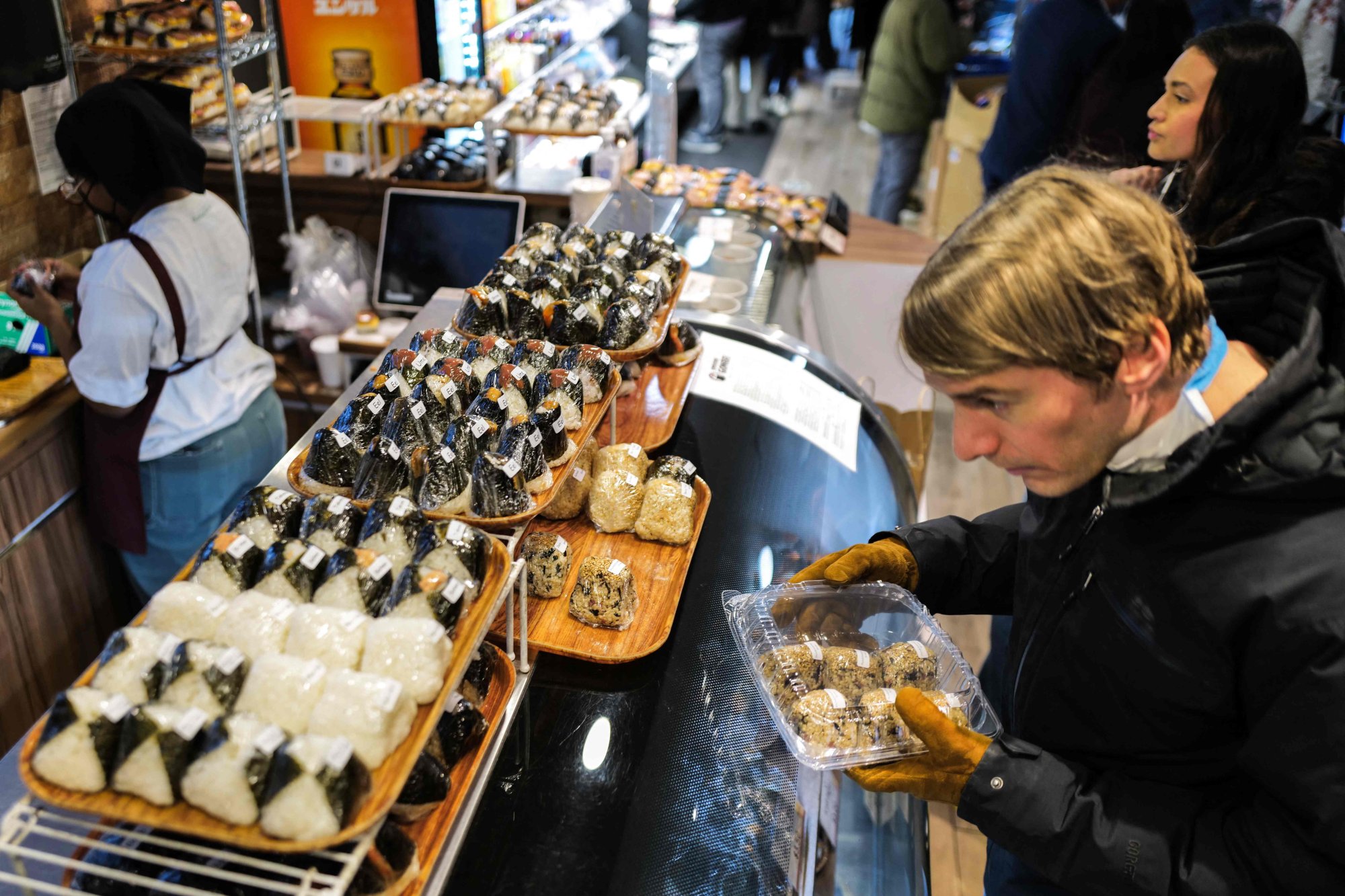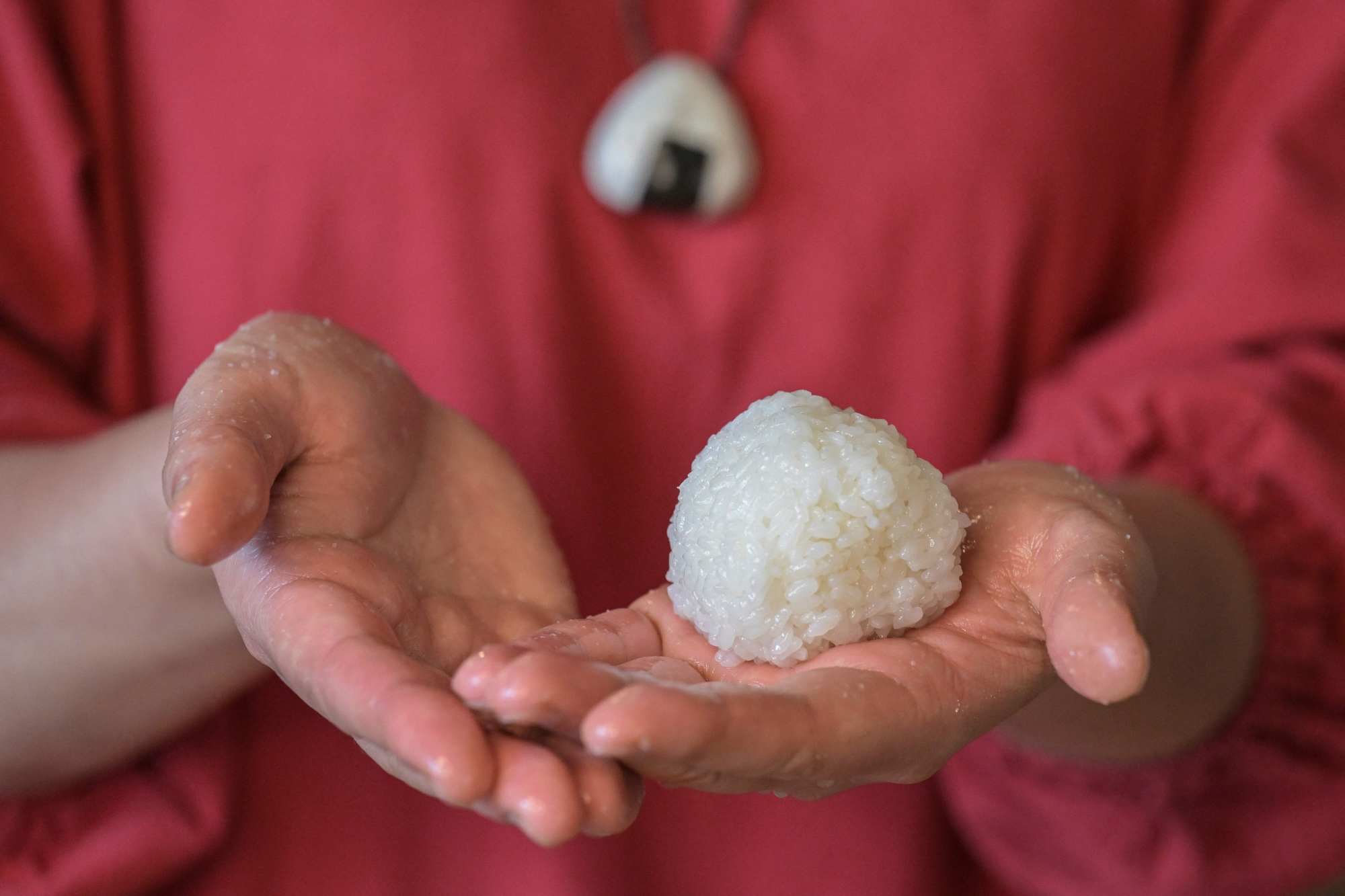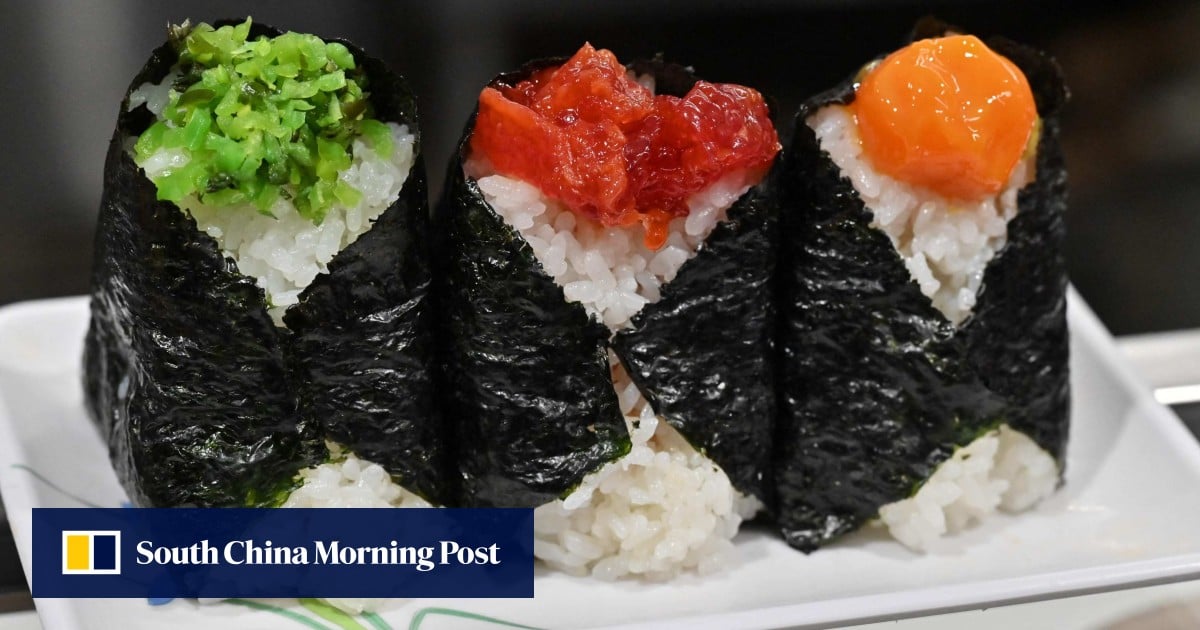In the past, “no one came between lunch and dinner, but now customers queue non-stop”, says 71-year-old Yumiko Ukon, who runs the more than half-century-old shop.
Onigiri Bongo only has nine counter seats, but sells around 1,200 rice balls each day.
How sushi took over the world (and it’s not from Japan)
How sushi took over the world (and it’s not from Japan)
“When I was young, onigiri was something you would make at home,” Ukon says. “Now people buy onigiri, or go out to have onigiri.”
Long popular as on-the-go fuel in Japan, onigiri have been eaten for over a millennium in the country, where they were once taken onto the battlefield by samurai.
The quick bites can be found in convenience stores on practically every corner, ubiquitous enough to be banal.

Japanese rice ball chain Omusubi Gonbei has opened outlets in Paris and near Grand Central Station in New York.
“It’s light, healthy and easy to eat,” says 53-year-old customer Sean King, who first tried onigiri in Japan and was “very happy” to find them in the Big Apple. “You do not have any regrets after eating one.”

“From that moment, people who saw onigiri as an everyday bite to eat began to see it as a quality dish,” says Yusuke Nakamura, president of Japan’s Onigiri Society.
Spending on onigiri and other pre-prepared rice products has grown by 66 per cent over the past two decades in Japan, figures from the internal affairs ministry show.

In 2022, onigiri were the second most frequently bought ready-to-eat food in Japan after bento lunchboxes, according to the Japan Ready-made Meal Association.
And the number of specialised onigiri shops is rising quickly, Nakamura says.

While imported grains like wheat have become more expensive because of the war in Ukraine, “the price of rice, grown domestically, is relatively stable”, Nakamura explained.

She began posting pictures of her perfectly presented rice balls on social media, and the business grew from there.
Onigiri shops usually cannot afford advertising, but online posts by fans showing different varieties of the colourful dish have played a big role in their new popularity, the Onigiri Society’s Nakamura says.

Younger customers are also attracted by “premium” rice balls made with quality ingredients, with various other cereals mixed in to make them more nutritious.
Miyuki Kawarada, 27, is president of Taro Tokyo Onigiri, which opened two shops in the capital in 2022 selling top-quality onigiri at up to 430 yen (US$2.85) each.
Kawarada wants to open dozens of onigiri restaurants abroad and thinks the snack could one day dethrone sushi as Japan’s best-known culinary export.
Onigiri “can be vegan, or halal, and can be adapted to suit different cultures”, she says. “In Japan, but also abroad, I want to renew the stuffy, old-fashioned image of rice.”







